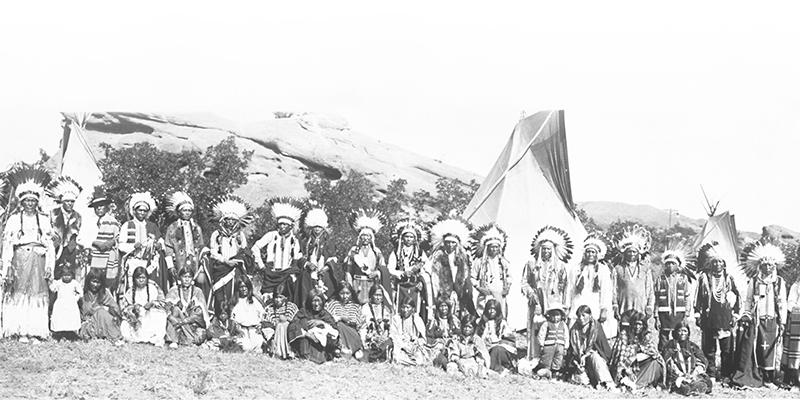As Colorado grows, protecting what makes our home special is vital.
Join us in conserving the land and water that unite us.
Before it was America’s Mountain, Pikes Peak stood at the center of the Tabeguache band of the Nuche (known to most today as Ute) tribe’s geography and identity. They were the “People of the Sun Mountain,” placed there by Sunif (the wolf) to grow and flourish amid the foothills of the majestic peak.
For hundreds of years, they did. While the Ute people ranged across Colorado and parts of Utah, the Tabeguache band (one of about 10 bands of the tribe, including the Moache, Capote, Weeminuche, Grand River, and Uintah bands) centered themselves around Tava, or Pikes Peak. Even as neighboring tribes including the Kiowa, Lakota, Cheyenne, and Arapahoe entered their territory (possibly in search of buffalo) and then European colonization forced other tribes toward Colorado, the Utes returned every season to their storied homeland. They used Ute pass, stretching from Manitou Springs to the area near South Park, which allowed them to follow buffalo herds and escape the frigid winters in the higher elevations. They called the pass the “doorway to the red earth mountains.”

The red-dirt parks of Garden of the Gods and Red Rock Canyon Open Space (where they referred to the jutting rock formations as “the bones of Mother Earth”), the dense woods of Black Forest, and the bubbling waters of Manitou Springs were their sacred spaces, their home, and their origin. In an 1868 treaty, the Tabeguache were forcibly removed from their lands and sent to a reservation on the western slope of Colorado. As their identity and name were tied to place, they then became known as the Uncompahgre band of the Ute tribe.
Even before the Ute tribes, Paleo-Indian people hunted and lived in the shadow of the mighty mountain as early as 10,000 BCE. Evidence of their lives—tools, etchings, and fire pits—are left in the places we recognize as iconic parks and open spaces. They tell an enigmatic tale of how and where these first inhabitants lived. In some local parks, culturally modified Ponderosa trees, either stripped of bark or bent, evince a sacred relationship between nature and myth.